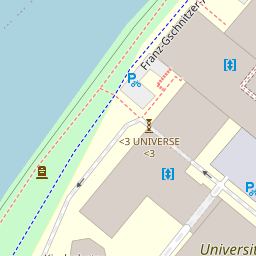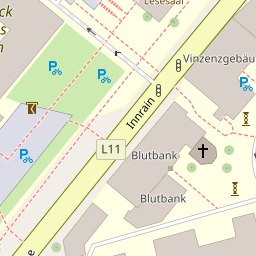Nanostrukturierte Modell-Katalyse
Our group focuses on the mechanistic understanding of processes at the solid/gas interface on materials relevant for reactions in sustainable catalysis, such as methanol steam or methane dry reforming and the selective catalytic reduction of nitrogen oxide. Materials range from oxide over metal-oxide systems to intermetallic compounds and alloys and by combining model systems under ultra-high vacuum and (powder) materials under technologically relevant conditions we are devoted to close the “pressure” and “materials” gap in catalysis. Our approach is the exclusive use of in situ and operando structural and spectroscopic techniques to study the catalyst behavior under close-to-real conditions.
This interdisciplinary approach involves collaboration between researchers from various fields, including materials science, chemistry, physics, and engineering. We strive to develop innovative solutions to complex scientific problems and contribute to the advancement of the field.
News
Wir freuen uns sehr, mitteilen zu können, dass wir aufgrund der erfolgreichen Umsetzung von zwei neuen Projekten offene Doktoratsstellen zu vergeben haben. Wir suchen motivierte und talentierte Nachwuchswissenschaftlerinnen und -wissenschaftler, die sich für eine Promotion in einem unserer Projekte interessieren.
Die beiden Projekte bieten spannende Forschungsmöglichkeiten in verschiedenen Bereichen und ermöglichen es den Doktorandinnen und Doktoranden, an innovativen Themen zu arbeiten und wertvolle Erfahrungen zu sammeln. Wir bieten eine herausfordernde und anregende Forschungsumgebung sowie eine intensive Betreuung durch erfahrene Wissenschaftlerinnen und Wissenschaftler.
Wenn Sie an einer Promotion in einem unserer Projekte interessiert sind, freuen wir uns auf Ihre Bewerbung. Bitte beachten Sie die Ausschreibungen auf unserer Webseite und senden Sie uns Ihre Bewerbungsunterlagen bis zum angegebenen Bewerbungsschluss. Wir freuen uns darauf, talentierte und engagierte junge Forscherinnen und Forscher bei uns begrüßen zu dürfen.

Double Perovskites as Mixed Ionic-Electronic Conductors FWF P 35770
The main focus of the project “Double Perovskite-based Mixed Ionic-Electronic Conductors (MIEC)” lies on the synthesis and understanding of a new prospective class of double perovskite systems on strontium-iron-vanadium/niobium basis (Sr2Fe1+x(V/Nb)1-xO6-d) with controlled defect chemistry, and their in situ and operando characterization with respect to their use as prospective MIEC materials in solid oxide cells. Double perovskites belong to the class of complex oxides, which - due to their manifold physico-chemical properties – exhibit the potential to substitute to date used conventional materials with unfavorable behavior under extreme experimental conditions in fuel cell systems. To do so, the usual main obstacle of poor structural stability under relevant technological operating conditions has to be overcome. The focus of the project is the direct correlation of in situ/operando-determined redox chemistry and structural stability with catalytic properties in internal reforming reactions. The most important step hereby is the knowledge-based synthesis of the materials under controlled oxygen fugacity to directly steer the defect concentration and the redox behavior. In this respect, we will directly exploit the physico-chemical properties of the constituting elements to influence and trigger favorable material’s properties. Of equal and paramount importance is the structural and (electro-) chemical characterization of the materials under in situ and operando conditions, i.e. in the state of operation.
To achieve these goals, we utilize a portfolio of characterization methods capable of being operated under such close-to-real technological conditions. This includes in situ/operando structural characterization (X-ray diffraction, electron microscopy), electrochemical performance (electrochemical impedance spectroscopy), surface chemical characterization (FT-Infrared Spectroscopy), monitoring the electronic structure (in situ X-ray photoelectron spectroscopy) and quantitatively assessing the defect concentration. The scientific and methodological approach allows us to gain unprecedented insight into the structure-property relationships of double-perovskite materials in the working state of the materials and to optimize generalized synthesis routines to prospective new catalytic materials for SOC operation.

Optimization of Carbon Chemistry in Methane Dry Reforming FWF P 36926-N
The main goal of the project “Optimization of the Carbon Chemistry in Methane Dry Reforming” is connected to the in situ/ operando experimental assessment and fundamental understanding of reactive carbon intermediates in different branches of the methane dry reforming network. In depth understanding of carbon reactivity and coke suppression will enable a focused, knowledge-based design of methane dry reforming. The central focus of the project is the direct correlation of the in situ/ operando determined reactivity of different carbon species with catalytic methane dry reforming activity. By exploiting the controlled in situ decomposition of selected intermetallic compounds towards active metal-oxide interfaces, we are able to quantify the reactivity of carbon bound in variable oxidation states between carbides and oxy-carbonates, including the suppression and re-mobilization of coke. The influence of material-specific redox chemistry, involving the the elementary carbon-forming and -converting reactions within the dry reforming network, will be scrutinized. To extract detailed structure-reactivity relationships, we will complement kinetic reactivity studies with in situ/ operando bulk and surface characterization under realistic reaction conditions. To accomplish these tasks, we rely on an exclusive portfolio of in situ and operando characterization methods capable of operation under close-to-technological conditions. This includes in situ/operando structural (X-ray diffraction, electron microscopy, Raman spectroscopy) and surface chemical characterization (X-ray photoelectron spectroscopy and FT-Infrared Spectroscopy), as well as integral quantification of carbon (thermo-gravimetry). We complement this characterization with kinetic reactor studies of important reactions within the dry reforming network and with theoretical assessment of the observed carbon reactivity trends. The controlled in situ decomposition of variable intermetallic precursors allows to induce a broad range of interfacial and bulk carbon species. Our methodological approach will provide novel material-specific insights into viable carbon reaction pathways within the methane dry reforming network.
Projektpartner: Institut für Mineralogie und Petrographie (Universität Innsbruck) und Ceram Austria GmbH, Institut für Verfahrenstechnik des industriellen Umweltschutzes (Montanuniversität Leoben)
Die Sicherstellung einer möglichst vollständigen und weitgehend schadstofffreien Konvertierung ist eine wichtige Herausforderung bei allen Arten von Verbrennungsprozessen. Dies gilt in besonderem Maße sowohl für konventionelle, kohlenstoffbasierte, industrielle Verbrennungen, wie sie nach wie vor beispielsweise in Zementwerken oder in der Eisen- und Stahlerzeugung eingesetzt werden, als auch für zukunftsweisende nachhaltig produzierte Energieträger, beispielsweise in Form von e-Fuels oder Biogas. Die Vermeidung einer Wirkungsgradminderung durch unverbrannte gasförmige Verbrennungsrückstände ist einerseits aus Gründen der Energieeffizienz, andererseits aus Klimaschutzüberlegungen ein Gebot der Stunde. Die Ursache dafür ist in der Emission von Verbrennungsrückständen und intermediären Verbindungen wie Methan oder Lachgas zu suchen, welche ein im Vergleich zu Kohlendioxid vielfach höheres Treibhauspotential mit sich bringen und/oder zu toxischer Folgechemie beitragen, wie etwa in Form von bodennahem Ozon.
Die Oxidationskatalyse ist eine bewährte Technik, um Verbrennungsrückstände, wie Kohlenmonoxid, Lachgas oder unverbrannte Kohlenwasserstoffe auch bei niederem Abgastemperaturniveau vollständig umzusetzen und die damit einhergehende Abgastemperaturerhöhung für weitere Abgasbehandlungsschritte, wie etwa Entstickungsmaßnahmen („DeNOxing“) vorteilhaft nutzen zu können. Die Implementierung derartiger Emissionsminderungsmaßnahmen für reale und feuchte Abgasströme wie beispielsweise aus industriellen Anlagen oder Biomassefeuerungen erfordert jedoch robuste Katalysatoren. Diese müssen insbesondere eine hohe Schwefeloxidtoleranz aufweisen, da bestehende Oxidationskatalysatoren, meist auf Edelmetallbasis, bereits durch sehr geringe Konzentrationen von Schwefeloxiden geschädigt werden.
Das gegenständliche Projekt SulfROX beschäftigt sich mit der Forschung an edelmetallfreien Oxidationskatalysatoren aus Mischoxiden, genauer gesagt der Erforschung von kristallinen eisengruppenelementhaltigen Mineralphasen, deren Oberflächenacidität als maßgeblicher Schutzfaktor gegen einen schwefelsauren Angriff optimiert werden soll. Mit den chemischen Umsetzungen einhergehende Umwandlungen von Mineralphasen werden durch maßgeschneiderte in-situ Diagnostik detektiert und tragen zur Mechanismus-Aufklärung bei. Für geeignet erscheinende Aktivmaterialien werden im Projekt Synthesewege unter weitgehend nebenproduktfreien Green-Chemistry Gesichtspunkten entworfen. Ausgehend von Materialien mit hoher Verfügbarkeit werden diese Materialien für Performancetests in keramikgeträgerte Modellwabenkörper überführt. Die Forschungsaktivität legt damit die Grundlage einer zukünftigen Generation von Oxidationskatalysatoren, die einen wesentlichen Beitrag zur Einhaltung aktuell in Verschärfung befindlicher Luftreinhaltungsregularien im EU-Kontext und darüber
Kontakt
Institut für Physikalische Chemie
Josef-Möller-Haus
Innrain 52c
A - 6020 Innsbruck
Österreich
Arbeitsgruppenleiter
Assoz. Prof. Dr.
Bernhard Klötzer
Priv.Doz- Dr.
Simon Penner
Lageplan















